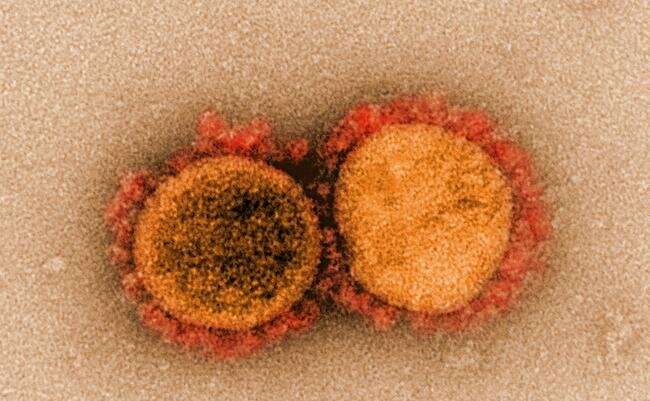Long COVID associated with different clinical trajectories, characteristics depending on severity of initial infection

New research to be presented at this year's European Congress of Clinical Microbiology & Infectious Diseases (ECCMID) in Lisbon, Portugal (23-26 April), suggests that the clinical trajectories and characteristics of long COVID may be different depending on the severity of the initial SARS-CoV-2 infection.
The large population-based study conducted during the first three waves of the pandemic, by Dr. Pontus Hedberg from the Karolinska Institutet, Stockholm, Sweden and colleagues, also found a substantially higher rate of outpatient primary care use among individuals with long COVID-19, indicating persistence of the condition well beyond the initial infection.
The occurrence and risk factors of post COVID-19 condition, more commonly known as long COVID, and associated healthcare use before and after initial infection remain poorly understood.
To find out more, researchers conducted a retrospective population-based cohort study of 205,241 adult residents (aged 18 or older) of the Stockholm Region who had received a positive SARS-CoV-2 test between 1st March 2020 and 31st July 2021, and were alive 90 days after their test result, with and without a long COVID diagnosis. Individuals were determined to have long COVID if they received a diagnosis of post COVID-19 condition anytime between 90 and 360 days after their first positive test.
Modeling was used to analyze associations between age, sex, severity of infection, underlying medical conditions, previous healthcare usage, sociodemographic factors (eg, region of birth, education level and residential area type) and long COVID in non-hospitalized, hospitalized patients, and ICU-treated individuals.
In addition, individuals with long COVID-19 were propensity score matched to individuals without long COVID-19 by these factors as well as month of first positive test to assess healthcare use before and after the initial infection.
Among 205,241 adults with SARS-CoV-2 infection, almost a third (32%) of those treated for COVID-19 in ICU developed long COVID, as well as 6% of those hospitalized, and 1% of outpatients.
Fatigue was the most common registered symptom diagnosis among non-hospitalized patients (26%); while shortness of breath was the most frequently registered symptom diagnosis in both hospitalized patients (23%) and those treated in ICU (39%).
Analyses suggest that women were more than twice as likely to be diagnosed with long COVID compared to men among individuals with milder forms of initial infection, who did not require hospital care. A weaker association with female sex was also found among hospitalized but not ICU-treated individuals.
A history of mental illness or asthma was associated with twice the risk of being diagnosed with long COVID in people with initially mild COVID-19. This association was less pronounced among hospitalized individuals, and not seen among ICU-treated individuals.
The study also found a strong association between a history of outpatient primary care visits and long COVID-19 in those with initially mild COVID-19, but not in those who were treated in hospital or the ICU.
In addition, the researchers found the rate of outpatient care visits in people with long COVID-19 were substantially higher in the 10-12 months after the initial infection compared to before, indicating persistence well beyond the acute infection.
According to Dr. Hedberg, "Many of the symptoms and risk factors reported in this study have been previously implicated in long COVID, but different study populations, assessment windows, and definitions of long COVID-19 prevents direct comparison between different studies. To the best of our knowledge, this is the first time the long COVID diagnosis issued by the WHO has been investigated across different severities of the initial SARS-CoV-2 infection."
He continues, "Our findings reveal different associations between age, sex, comorbidities, symptoms, and healthcare use in people with more severe and milder forms of disease, which indicates different clinical trajectories and characteristics of long COVID. Future research should focus on better understanding the persistence of this debilitating condition across different groups of individuals."
Despite the important findings, this is a retrospective observational study of a new diagnosis, and as such the observed associations do not necessarily indicate causation. In addition, the researchers acknowledge that they were unable to explore the impact of SARS-CoV-2 vaccination or the recent Omicron variant on long COVID, or to rule out the possibility that other unmeasured factors may have affected the results.


















